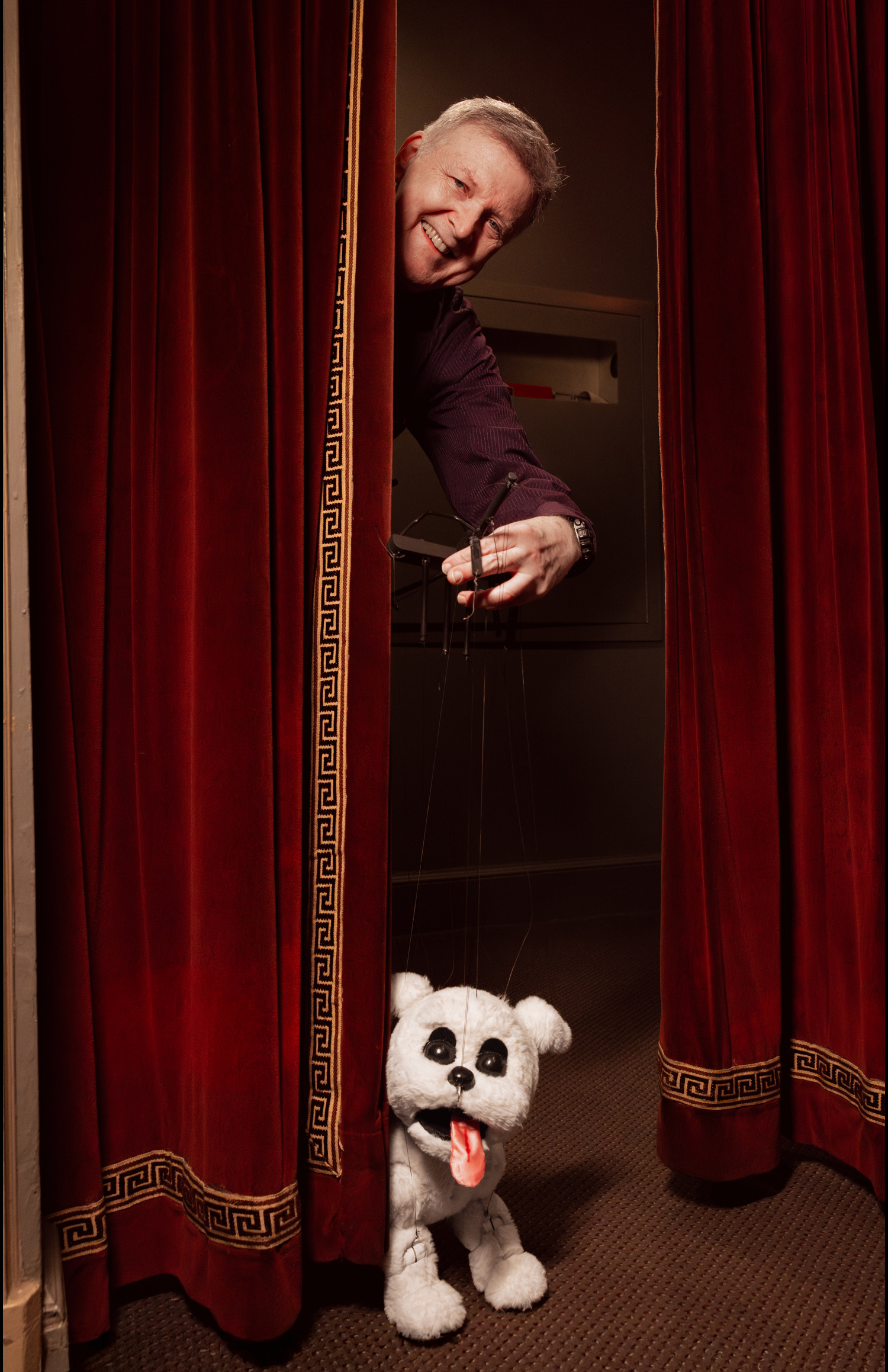Pudgy
(Photo by Sergio Villarini for Broadway.com)
One of the breakout stars of this Broadway season is a lovable, cheeky pup named Pudgy. As Betty Boop’s canine companion in BOOP!, the little scamp is winning hearts eight times a week. “He’s a very intelligent dog,” Pudgy’s minder, Phillip Huber said at the Broadhurst Theatre. “I’d say he is two-thirds cartoon and one-third real dog. He understands everything that everybody says.”
He added, “Pudgy is also a very independent dog. He loves to go out and explore and find things on his own. He’s a little bit mischievous.”
To be clear, Pudgy is also a puppet, imbued with life—or we should say, in the spirit of the show, animated—by Huber, a twinkly-eyed master of the art of the marionette.
The show’s director, Jerry Mitchell, initially debated whether Betty’s best friend should be portrayed by a real dog or a puppet. Needless to say, Huber’s prototype Pudgy settled the debate.
(Photo by Sergio Villarini for Broadway.com)
It took Huber 300 hours to construct the Pudgy that audiences meet in the show. (The spare Pudgy took just as long.) The pup’s outwardly adorable appearance belies the puppet’s mechanical intricacy: It boasts eyes that can open and shut, a tongue that can roll out of the mouth and ears that cock and twist. Huber controls it all via 27 black nylon strings with the finesse of a lifelong prestidigitator. Still, all that fancy fingerwork takes a lot of concentration. “It’s like playing chess. You have to think two or three moves ahead of time, to move your fingers to a certain place to get certain strings.”
The performance is also informed, Huber said, by a lifelong love of (real-life) dogs.
Huber got his first puppet when he was three years old—a little dog puppet. His mother had noticed he was extremely shy and hoped the puppet would help. “It was successful. I used it as a way to express myself. I’d hide behind the sofa and wait for somebody to come in the living room and then start working the puppet.”
“Puppets, if they’re instilled with enough life, make anything else going on around them cease to exist for the audience.“
–Phillip Huber

By the time he was seven, Huber had amassed a couple of hundred hand puppets. “I started doing shows and I would print and sell tickets for neighborhood kids to come.” It was just the beginning of a lifelong journey with the art form.
What makes a good puppeteer? “I’d say that a good puppeteer has to be a good actor, but a good actor doesn’t necessarily make a good puppeteer. It takes somebody who doesn’t care if they’re in the background, so they can put all of their focus, all of their life into the character itself rather than into their own body.
“Puppets, if they’re instilled with enough life, make anything else going on around them cease to exist for the audience,” Huber added. “It doesn’t matter if they can see controls, or if they can see the puppeteer in full view. They will be focused right onto that character.”
With Pudgy, Huber said, the challenge is that the pup is such a star. “Pudgy can pull focus almost anytime he wanted to. He could upstage anybody—and I don’t want him to do that, obviously. He’s an ensemble player.”
Check out the full gallery of pics from Broadway.com’s time with Pudgy below.





